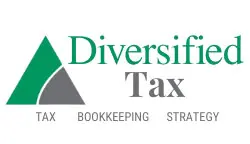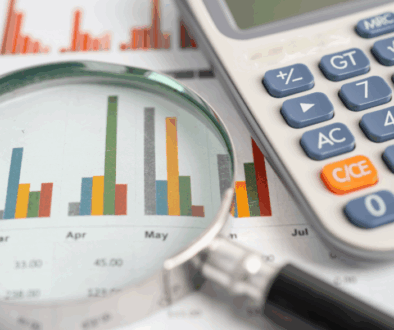Personal Property Tax: What It Is and How It Works
Personal Property Tax: What It Is and How It Works
Understanding personal property tax is essential for anyone who owns tangible assets beyond real estate. It’s a type of property tax that can affect your financial planning and management, making it a vital topic for both individuals and businesses. Personal property tax is often overshadowed by the more commonly discussed real estate taxes, yet it carries significant implications for your budget and legal responsibilities. Its application varies widely, depending on local laws and the types of properties owned, which underscores the importance of grasping its nuances to navigate potential financial impacts effectively.
This article will explore the essentials of personal property tax, including its definition, the different types of personal property taxes, and how these taxes are assessed. By providing a clear roadmap through the complexities of personal property tax, this piece aims to arm you with the knowledge needed to manage this aspect of your financial life confidently.
What is Personal Property Tax?
Personal property tax is a levy imposed by state or local governments on movable assets that are tangible and not permanently affixed to one location. Unlike real property, which includes immovable assets like land and buildings, personal property comprises items such as vehicles, machinery, equipment, and furniture. This type of tax is critical for funding public services such as road maintenance and school construction.
The rules governing personal property tax vary significantly across different jurisdictions in the United States. Not all states impose this tax, and those that do may have varying criteria and rates. For instance, some states assess personal property tax on items used in a business, like photocopiers and computers, while others might tax personal items such as cars and jewelry.
The assessment of personal property tax is typically based on the value of the property, known as ad valorem tax. Tax assessors use various methods to determine this value, which can include the average trade-in value for vehicles or fair market value for other types of property. The tax rate applied can differ by state and locality, with some jurisdictions implementing a flat rate across all property types and others having different rates for different categories of property.
Understanding these nuances is essential for effectively managing one’s financial responsibilities and planning accordingly.
Different Types of Personal Property Taxes
Personal property taxes encompass various forms of ownership, categorized mainly into tangible, intangible, and listed personal property. Each category has specific tax implications and assessment criteria.
Tangible Personal Property
Tangible personal property includes physical items that can be moved or touched, such as vehicles, machinery, and office equipment. This category often faces ad valorem taxes, where the tax amount is based on the item’s assessed value. Common examples include furniture, computers, and industrial tools. Certain tangible assets like vehicles and heavy machinery can be depreciated over time, potentially affecting their taxable value.
Intangible Personal Property
Intangible personal property refers to assets that do not have a physical presence but hold value, such as intellectual property, stocks, and bonds. These assets are often not subject to traditional property taxes but may face other tax considerations like capital gains taxes. Intangible assets can include copyrights, patents, and investment securities, which contribute to the financial valuation of a company or individual.
Listed Personal Property
Listed personal property typically includes items used for both personal and business purposes, such as electronics and vehicles. This property is often taxed based on specific criteria that differentiate between its use in a business setting versus personal use. The tax treatment for listed personal property can vary significantly, making it crucial for taxpayers to accurately track and report their usage.
Understanding these distinctions is essential for proper financial planning and compliance with tax regulations.
How Personal Property Taxes Are Assessed
Assessing personal property taxes involves several key steps to determine the tax liability associated with tangible personal property. This process varies by jurisdiction but generally follows a structured approach to valuation and tax calculation.
Assessment Methods
Personal property is assessed based on its classification as tangible or intangible. Tangible personal property includes items like machinery, office furniture, and vehicles, which are perceptible to the senses. The assessment methods can differ significantly, with some jurisdictions using manuals like the Assessors’ Handbook to guide the valuation process. For instance, vehicles may be valued based on trade-in values from authoritative sources such as the National Automobile Dealers Association.
Determining Value
The value of personal property is typically determined using the ad valorem principle, where tax is based on the assessed value of the property. Valuation can be influenced by several factors, including depreciation. Depreciation types such as physical, functional, and external can affect the assessed value. Physical depreciation considers wear and tear, while functional depreciation takes into account obsolescence due to technological changes. External factors like market conditions also play a role, especially for equipment in industries experiencing downturns.
Calculating Tax
The calculated tax is a percentage of the assessed value of the property. This rate varies by state and locality, with some areas applying a flat rate across all types of property and others differentiating between property types. The tax rate is often set by local governments within limits prescribed by the state. For example, the basic property tax rate in California is 1%, but local adjustments may apply. The final tax amount is determined by applying the local tax rate to the assessed value of the property, providing the basis for the tax bill a property owner will receive.
Conclusion
Through this exploration of personal property tax, it’s evident that understanding the ins and outs of this financial obligation is imperative for both individuals and businesses aiming to navigate through their fiscal responsibilities successfully. The distinction between tangible and intangible assets, along with the subsequent tax implications and assessment methods, demonstrates the complexity of this area of taxation.
The significance of being well-informed about personal property tax cannot be overstated, as it plays a crucial role in funding public services while directly impacting financial planning and budgeting. With the outlined strategies for compliance and the emphasis on the need for accurate record-keeping and adherence to deadlines, taxpayers are well-equipped to address their tax responsibilities. Moving forward, staying informed about changes in tax legislation and seeking professional advice when needed will further empower property owners to make informed decisions regarding their personal property tax obligations.




